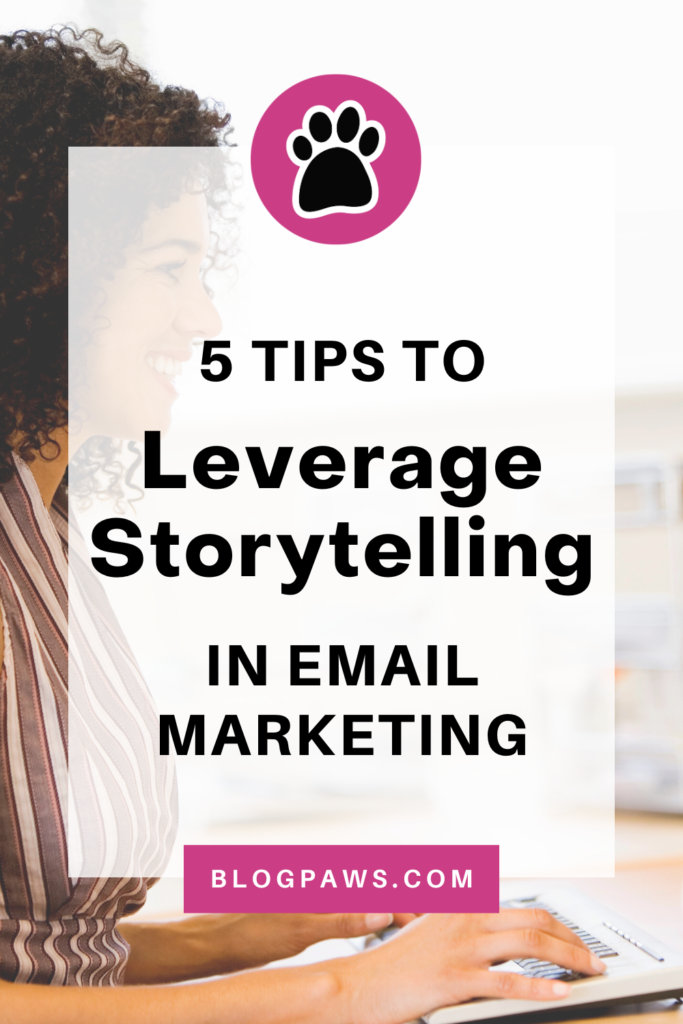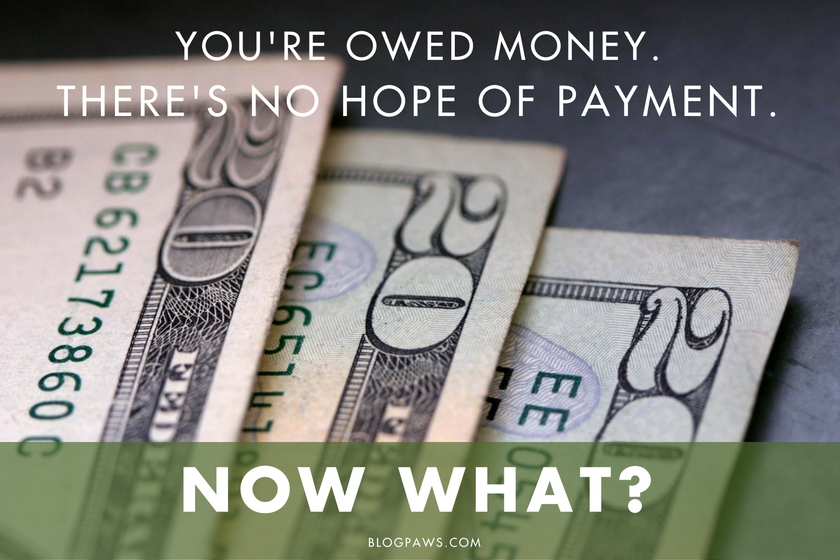5 Tips to Leverage Storytelling in Email Marketing
Email inboxes are overflowing with every kind of email under the sun: good emails, bad emails, sales emails, pitch emails, spam emails, abandoned cart emails, emails with the freebie you just downloaded, and some really great emails too.
There are also examples of great storytelling in email marketing. They are the emails that keep you engaged. The kind of emails you read and forget you are reading an email because the story being shared is one you actually want to read.
Except what does that even mean? How do you apply it to your email marketing? The use of storytelling in marketing is a skill that most people covet, yet few truly understand.
We’re not talking about Disney movie storytelling here. We’re talking about creating authentic emotion in your content by using a good story. After all, that’s what Disney is great at: making you feel something.
In this article, we cover the basics of storytelling in email marketing by answering these questions:
- How is storytelling used in digital marketing?
- Why is storytelling so impactful?
- How can I include storytelling in my email marketing?
Keep in mind that knowing your audience well is the key to understanding the best stories to share.
How is Storytelling Used in Digital Marketing?
Storytelling is used regularly in digital marketing for several reasons. A major one is that people are more likely to remember a story you share over any data or stats. That’s a fact.
Check out the book Made to Stick by Chip and Dan Heath if you are looking for proof of this. They conducted an experiment with students at Stamford, who each prepared a 1-minute speech. On average, each student used 2.5 statistics during their short speech, but only 1 in 10 students used a story.
Guess what part of the speeches was remembered by the audience? The stories blew away the stats. 63% remembered the stories, and only 5% could remember any stats.
Stories are memorable, and who doesn’t want to be remembered?
What Prevents Your Stories from Being Remembered?
If you are wondering why you can’t recall any of the stories in the emails you’ve read recently, it’s probably due to one of these reasons:
1. The email didn’t actually use a story at all. And fun fact, not every email should be a full-blown story. There are several types of emails you should consider adding to your email marketing plan. Can you imagine if Wayfair sent a new story about a person’s patio furniture every time they emailed you their latest sale? No. That’s not the point here.
- The email didn’t craft a good story. What makes a story “good” is not always prescriptive. It’s not about being too short or too long, but rather being engaging. There are many ways to engage and connect with your readers. Unfortunately, many people don’t focus on the actual point of the story, so they get lost in the details. And then the story gets lost on the audience.
- You didn’t care about the character or the emotions the story was sharing. That’s okay. We are not all supposed to care about everything. The secret to success is to know your audience so you know what they care about and can share impactful stories with them.
Why is Storytelling So Impactful?
Speaking of impact, a story being impactful is about more than just the ability to remember it. A good story ignites an emotion in the reader. It’s that emotion that helps the story be remembered.
Any small pet business owner can think about the emotions their audience experiences and that they help solve. Those are the impactful stories to share in your marketing.
We all know the quote, “I’ve learned that people will forget what you said, people will forget what you did, but people will never forget how you made them feel.” It’s mainly attributed to Maya Angelou.
You simply have to hear the song, Angel, by Sarah McLachlan to know how true this statement is. The ASPCA pairing that song with sad-looking pets can immediately send us to a heartbroken place. Yet, I bet you wouldn’t be able to remember if I asked you to tell me how many pets are featured or the stats shared during the commercial.
In this case, the visual story of pets who are chained, hurt, or in harm’s way creates an emotional memory.
Now, we are not saying you should create heart-breaking stories so people remember you. What we are saying is that emotions are more memorable than stats.
Impactful stories focus on the emotion in a way that not only helps you remember the purpose but also even helps you remember the action you are being asked to take.
In the case of the ASPCA, they want you to donate. And now, forever, when I hear that Sarah McLachlan song, I think of pets needing me to help them. One point for the ASPCA.
For those of us who don’t have immense budgets to create that kind of commercial, we can still create impactful stories that ignite emotion and help our audiences remember us and what we do. Or better said, how we help them.
5 Ways to Include Storytelling in Email Marketing
If you are new to using storytelling in your email marketing, the best place to start is simply by starting. Your storytelling skills will improve as you use them, just like any other skill.
Before you even begin ideating on what story to tell, get clear on why you are telling it. What is the takeaway that people should remember or even that they should do? Going back to the ASPCA commercial, they are hoping people donate. You need to keep that reason in the forefront so your story achieves its goal.
If you’re not sure what your reason should be, consider these examples:
- To build trust about a product or service.
- To show the benefits of a product or service.
- To show that you understand your audience’s struggles.
- To celebrate a client’s success.
- To introduce yourself to new customers/clients/readers.
To help get you to craft your story, use these five tips:
- The character should be real. Either the character is you, or the character is someone you know. The only exception to this is if your pet business has fictional characters; if that is the case, you get a little more storytelling freedom.
- Start at the moment the emotion changes. Storytelling is about a journey, and the pivotal moment in that journey is when the emotions shift. The moment you realize something important or shift from overwhelmed to relieved, etc. Any shift in emotion is a great place to start your story.
- Stick to the pieces that keep the audience engaged. Sure, the sky might have been a hue of blue that reminded you of the ocean, but unless the story is about the ocean’s color, then it’s just a detail the audience doesn’t need. It’s okay to have all the frivolous details in your first draft, though. It can be helpful to get them all out and then see what is really important to create the impact the story is meant to deliver.
- Don’t make your first draft your final draft. We often think we are supposed to create a masterpiece on the first try. We’re not. We’re supposed to be creative and explore initially, then edit to ensure we stay on point later. Your final story will be better if it’s not the first draft.
- Don’t focus on length, but be sure to focus on length. This is just a way to say that there is no such thing as a story that is too short or too long. There is such a thing as a story that isn’t effective. So, focus on being effective, cutting details that aren’t necessary, and making sure your audience can feel the journey you are sharing.
The use of storytelling in email marketing can be very effective. It’s also not always necessary. Sometimes you just need to convey something to your audience or share a big sale or something that doesn’t need a story to go with it. Remember when recipe bloggers realized they needed to focus on SEO, so all their recipe posts started talking about growing up on a farm with an apple orchard for their apple pie recipe? You don’t need to do that.
Instead, consider where the stories of your business, customers/clients, products, and experiences can help you connect with your audience. Start sharing those stories and track the results for your email marketing. We would bet your CTR (Click Through Rate) and OR (Open Rate) will increase, and you’ll see how helpful it can be to incorporate storytelling in your marketing.
Has an email ever stood out to you due to the story it shares? We invite you to share your favorites in the comments and discover some inspiration for your future emails.
About the Author: Chloe DiVita, BlogPaws CEO, has 15+ years of experience in digital marketing, the pet industry, and as a greyhound mom. She’s earned accolades like, Pet Age’s 40 Under 40 and Muse Medallions from the Cat Writers’ Association. Formerly Executive Producer for TEDxCambridge, she brings storytelling and public speaking to her work with creators, leaders, and brands. Read more…









One Comment